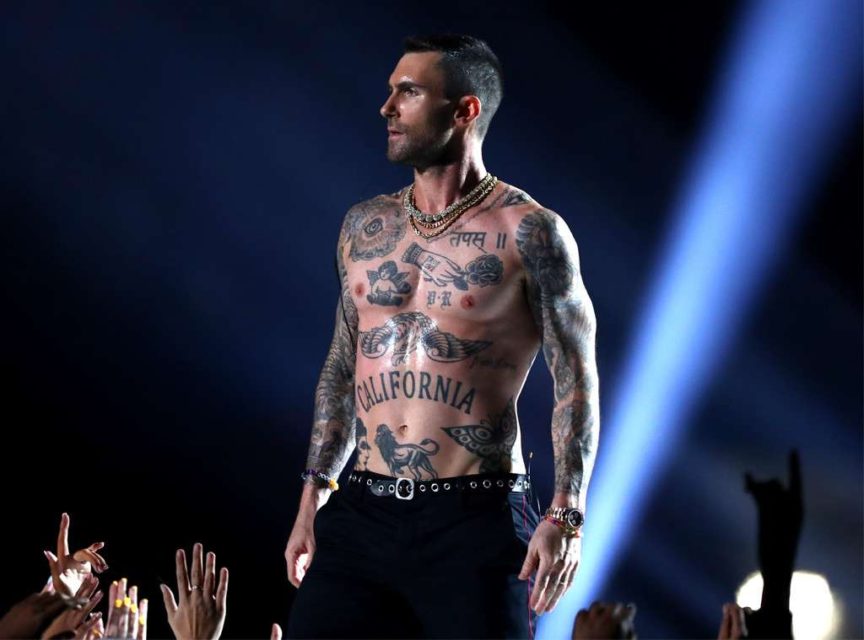
There were audible groans among the crowd — especially from the hetero dads — at my friend’s Super Bowl LII party when Maroon 5’s frontman Adam Levine took off his shirt towards the end of their half-time show and spawned Nipplegate 2. The consensus seemed to be that this was not only cheesy, but inappropriate.
Levine spent much of the performance making bedroom eyes at the camera, gradually removing layers of clothing — first a long jacket, then a tracksuit top, and finally his tight-fitting tank top — to reveal chiseled abs, extensive tattoo art, and two — count ‘em two — nipples. One of his patented moves was a subtle but unmistakable slinky hip roll reminiscent of sensual pelvic thrusting. He wasn’t just working hard singing and dancing and eventually getting sweaty and overheated — this was deliberate, choreographed self-objectification and -sexualization.
“It gave everyone the ickies,” one mom friend told me (there were plenty of kids watching the show). “The shirtless bit just does not work for me or my 7-year-old fan daughter. She says he is still her favorite, but that was just gross.”
I have to admit: I kind of loved it.
Don’t get me wrong. In an ideal world, the Super Bowl Halftime show would be a family-friendly spectacle of musical prowess and impressive pyrotechnics, with no sexual over- or undertones. And after the original Nipplegate in 2004 — when Justin Timberlake accidentally ripped off too much of Janet Jackson’s top to reveal a decorated nipple (a sin for which Jackson, and Jackson alone, beared all of the blame and punishment) — the halftime show became just that for several years, with straightforward rock performances by the likes of Paul McCartney, the Rolling Stones, Prince, Tom Petty, Bruce Springsteen, and The Who. (Perhaps it wasn’t just Jackson, but all of female rockdom who had to be punished for Nipplegate.)
But eventually the sexiness came creeping back in. Namely in the form of female pop stars in their underwear: Beyonce in 2013 in black leather and lace, Katy Perry in 2015 in a short skirt alongside bathing-suit-clad female dancers, Beyonce again in 2016 in a soldier leotard, and Lady Gaga in 2017 in not one one, but two different versions of bedazzled panties. To be sure, these were all super talented, musical powerhouses at zeniths in their careers giving impressive performances. But they were singing songs about lust, making sexy eyes at the camera, gyrating suggestively, and showing a lot of skin. So where was the outrage over inappropriateness then?
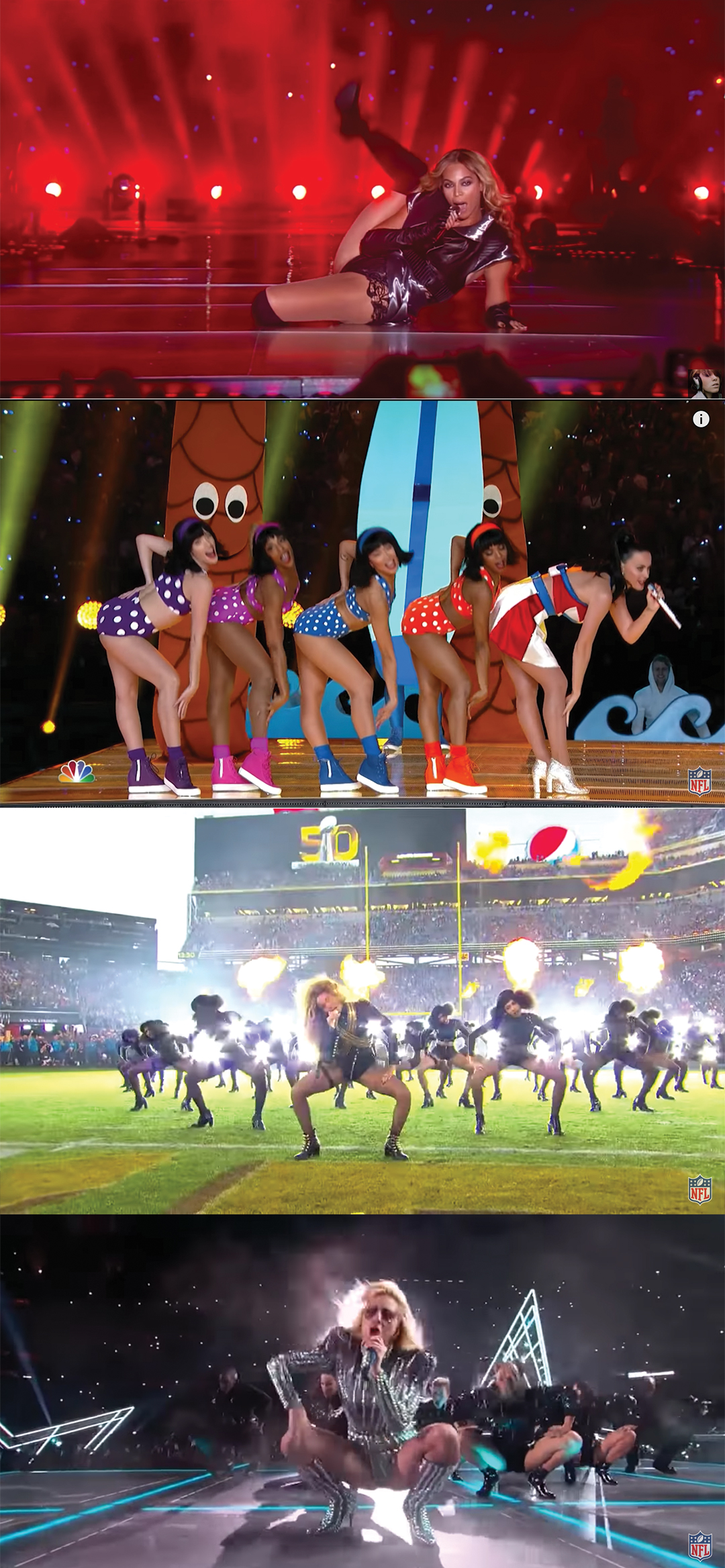
Female sexualization is so ingrained in our cultural psyche as the absolute norm — indeed, the requirement — for successful female celebrities. Fit female bodies are, apparently, the only form to be publicly admired and consumed. For Americans, there’s something decidedly feminine about sexual objectification. So when a man does it, especially a straight man, he’s derided for it.
Levine’s actually weren’t the first male nipples to make an appearance at the Super Bowl since Jackson’s wardrobe malfunction. In 2014, during Bruno Mars’ headliner halftime performance, the Red Hot Chili Peppers made a supporting appearance, with both vocalist Anthony Kiedis and bassist Flea totally shirtless. But they wore their nips with a difference: they didn’t strip, they didn’t make googoo eyes, they simply thrashed about the stage like aggressive adderall-fueled jumping beans at a punk show — not what many would consider typically “sexy” (even though Keidis was singing the lyrics “What I’ve got you’ve got to get it put it in you”).
There were a handful of complaints in 2014 about inappropriateness and double standards, but not as many as Levine has received in the day after. And I’d argue that’s mostly because Levine, a straight dude, committed the unforgivable sin of acting like a woman. Clutching your pearls when Levine does it, but not when Beyonce, Perry or Gaga do it, reveals some deep-seated sexism, homophobia and good-old fashioned American Puritanism.
Which, again, is not to say I want the Super Bowl Halftime Show to become one big striptease going forward, no matter the gender of the artists. For a communal family event like the Super Bowl, I say keep the sex out of it altogether (especially when we as a country don’t offer our kids decent, comprehensive sex education to be able to process sexual imagery critically). But what I found so refreshing last night was the fact that there wasn’t a single woman on stage either playing the oversexed sidekick clawing at Levine’s thighs or the supporting female guest star who’s equal in talent but not in amount of clothing. The only sexual objectification that happened on stage happened to a man for once.
I imagine Levine’s actions were not motivated by much more than his vanity. But perhaps the kind of role reversal he engaged in on such huge national level will actually do some social good. It’s not about how Levine should be punished for showing his nipples, but how Jackson should definitely not have been. His sexy reveal laid bare (ahem) just how bad the double standards are for women, especially black women — the bars are higher, the judgements are swifter, the consequences are harsher. And perhaps the discomfort so many straight, sports-loving guys felt as they watched Levine do exactly what so many female stars feel compelled to do will make them think twice about encouraging and accepting every-day, casual female objectification. At the very least, it might give them a taste of what it’s like to be subjected to the same unrealistic bodily beauty standards women have been held to for decades!
After the performance ended and I was pretty much the only one clapping with glee, my husband later said, “You know, two wrongs don’t make a right.” But if sexual objectification is going to exist in pop culture — and of course it always will — then I’d much prefer that objectification be equal-opportunity instead of one-sided. Evening the playing field in this regard might result in more restraint and less sexism (which sounds like an award-winning Super Bowl commercial tagline for a good light beer).
“Hey,” I said to my husband, “what’s good for the goose is good for the gander!”




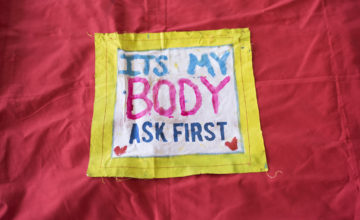




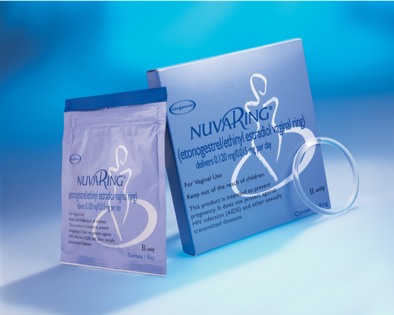
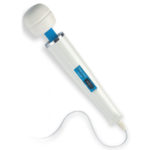






Good one! Thanks a lot to engage